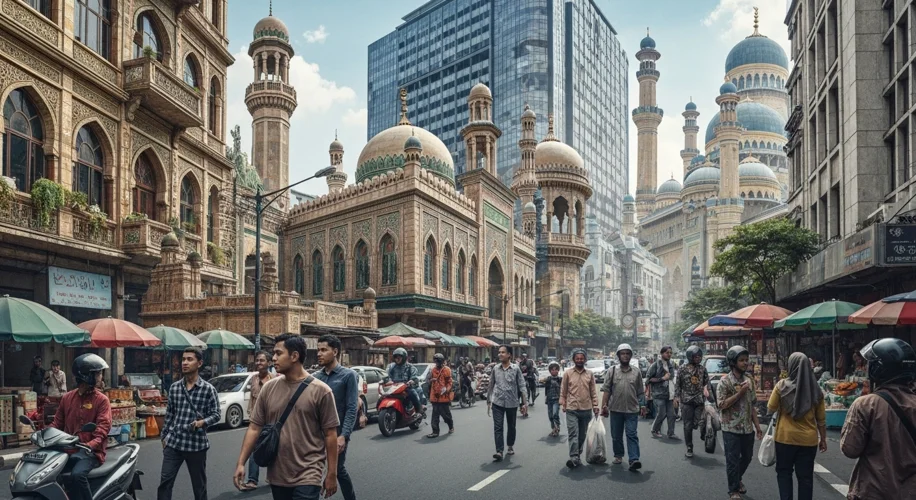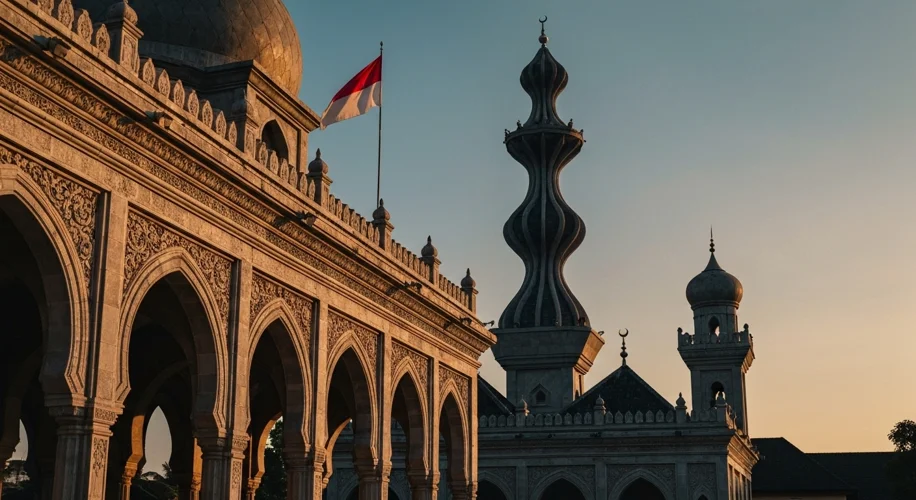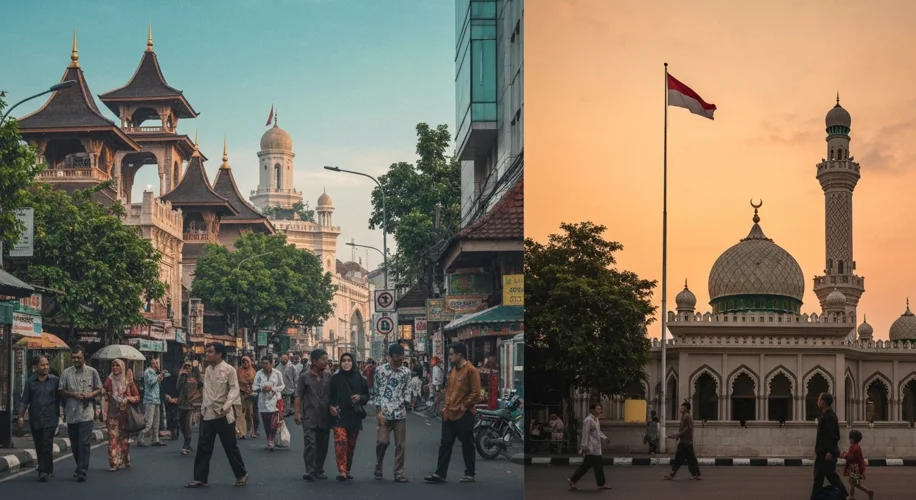For many in the West, the “Islamic World” conjures images of bustling souks in Cairo, ancient mosques in Istanbul, or vast desert landscapes stretching across the Arabian Peninsula and North Africa. This region, the Middle East and North Africa (MENA), has long dominated our perception of Islam’s global reach and political currents. Yet, this geographical focus often overlooks a colossal truth: the heart of the Muslim majority arguably beats strongest in Southeast Asia, specifically in Indonesia, the world’s most populous Muslim-majority nation.

Indonesia’s journey into nationhood post-World War II was a delicate balancing act, not just internally but also on the global stage. As the nascent republic sought to define its identity and forge alliances, the geopolitical currents emanating from the MENA region proved to be surprisingly influential. This wasn’t a one-way street. Indonesia, with its sheer population, also began to exert its own subtle influence, often in unexpected ways.
The Early Years: Navigating Cold War Tides and Islamic Solidarity
Following independence in 1945, Indonesia, under President Sukarno, adopted a non-aligned stance during the Cold War. This policy of bebas aktif (free and active) allowed Indonesia to engage with nations across the political spectrum. While Sukarno’s vision was primarily nationalistic, the broader Islamic world, particularly the newly independent nations in MENA, offered a potential bloc of solidarity. The Bandung Conference of 1955, though not solely an Islamic affair, was a landmark event that brought together Asian and African nations, including many from the Middle East, to chart a course independent of the superpowers. This conference, heavily influenced by Indonesian diplomacy, fostered a sense of shared destiny among developing nations, many of which were predominantly Muslim.
However, the Arab-Israeli conflict and the rise of pan-Arabism under leaders like Gamal Abdel Nasser in Egypt, while resonating ideologically with some in Indonesia, also presented complex diplomatic challenges. Indonesia, while supportive of Palestinian rights, had to carefully navigate its relationship with nations on both sides of the widening regional divides. The narrative of Islamic unity was powerful, but the practicalities of statecraft often dictated a more nuanced approach.
The Suharto Era: Balancing Faith and Geopolitics
President Suharto’s New Order regime (1967-1998) saw a shift in focus. While maintaining the non-aligned stance, Suharto sought to foster stronger economic and political ties with Middle Eastern oil-producing nations. This was partly driven by Indonesia’s economic needs, especially during periods of oil price volatility. Relations with Saudi Arabia, for instance, deepened, cemented by the significant number of Indonesian pilgrims undertaking the Hajj. This religious connection, while fostering cultural exchange, also brought with it the potential for increased religious conservatism to influence Indonesian society.

Simultaneously, MENA politics continued to cast a shadow. The Iranian Revolution of 1979, for example, sent ripples across the Muslim world, including Indonesia. While not leading to a direct mirroring of the revolution, it emboldened Islamic movements within Indonesia and contributed to a broader re-evaluation of the role of Islam in public life.
Post-Suharto Indonesia: A Global Muslim Voice
With the fall of Suharto in 1998 and the dawn of the reformasi era, Indonesia’s role in the global Islamic discourse evolved. The country became a prominent advocate for moderate Islam and played a crucial role in interfaith dialogue. Indonesian leaders often found themselves mediating or offering perspectives on issues affecting the wider Muslim world, from conflicts in the Middle East to humanitarian crises.
Conversely, the political upheavals and conflicts within MENA have, at times, spilled over into Indonesia. The rise of extremist groups in the Middle East, for instance, had a clear impact on Indonesian security concerns, leading to increased counter-terrorism efforts and a heightened awareness of radical ideologies. The perception of Islam in the West, often shaped by events in MENA, also influenced how Indonesia was viewed and how its own moderate Islamic identity was asserted.
A Reciprocal Influence?
While the flow of influence from MENA to Indonesia has been more extensively documented, the reverse is also worth considering. Indonesia’s sheer demographic weight means its internal religious and political developments can offer a counter-narrative to dominant MENA-centric views of Islam. The success of democratic transitions in Indonesia, despite challenges, provides a model for some in the Muslim world grappling with similar issues. Furthermore, Indonesia’s active participation in international forums, including those with MENA nations, allows it to shape discussions and advocate for its own interests and perspectives.
The connection between Indonesia and the “Islamic World” is not a simple matter of religious affiliation; it is a complex tapestry woven with threads of history, economics, politics, and shared human aspirations. Recognizing Indonesia’s place within this global narrative challenges simplistic Western assumptions and reveals a far richer, more interconnected story of the modern Muslim world. It’s a story where Jakarta’s voice, though often unheard in Western media, is an integral part of a global conversation that extends far beyond the familiar sands of the Middle East.

